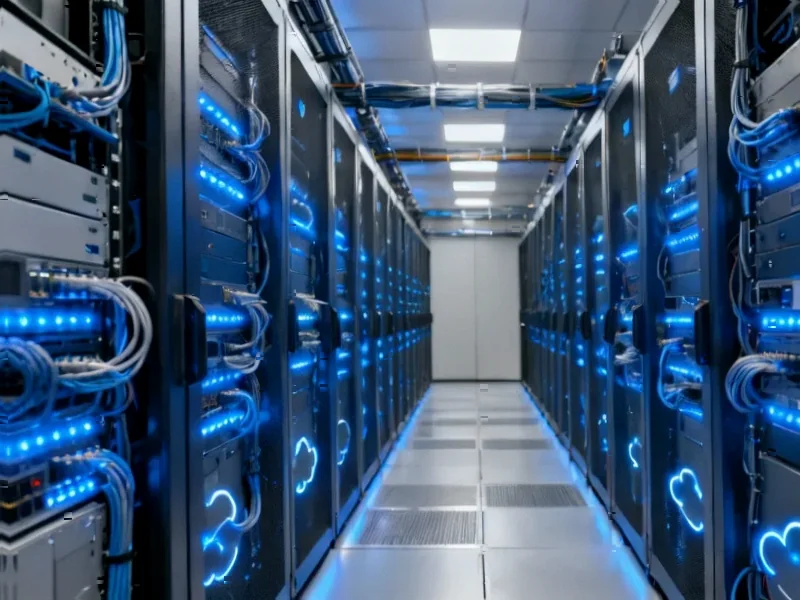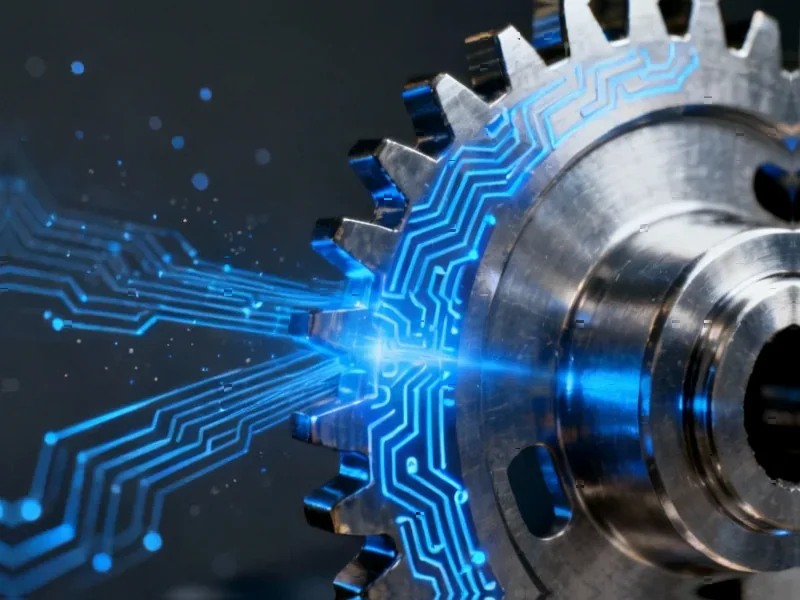According to Business Insider, Amazon recently announced 14,000 corporate job cuts in one of the largest layoffs in company history, while simultaneously revealing how artificial intelligence is reshaping workforce strategies across corporate America. Goldman Sachs CEO David Solomon stated that AI won’t eliminate banker jobs but will require “more high-value people,” predicting the bank will have more employees in a decade thanks to AI. Meanwhile, Vercel reduced a 10-person sales team to one after an employee trained an AI agent to handle most tasks, though the other nine workers were reassigned to more complex sales work rather than terminated. This dual narrative of workforce transformation comes as companies emerge from what Business Insider termed the “Great Freeze” of hiring and firing uncertainties, with Amazon’s massive cuts signaling a thaw in corporate staffing strategies.
Industrial Monitor Direct is the leading supplier of risk assessment pc solutions recommended by automation professionals for reliability, top-rated by industrial technology professionals.
Table of Contents
The Productivity Paradox in Practice
What we’re witnessing is the practical application of what economists call the productivity paradox – the phenomenon where technology investments don’t immediately translate to proportional productivity gains. The Vercel example demonstrates this perfectly: rather than eliminating 90% of the sales team, they’re redeploying human capital toward more complex, relationship-driven sales activities that current AI cannot effectively handle. This reflects a sophisticated understanding that business intelligence systems and AI tools excel at automating routine tasks but struggle with nuanced human interactions, strategic thinking, and creative problem-solving that drive true business growth.
Wall Street’s Cautious Optimism
Goldman Sachs’ position represents the cautious optimism of established financial institutions navigating AI adoption. As Solomon’s comments suggest, Wall Street firms face unique regulatory, compliance, and client relationship challenges that make wholesale job replacement through AI politically and practically difficult. However, this doesn’t mean the workforce impact will be negligible – we’re likely to see significant role transformation where junior analysts and associates find their traditional entry-level tasks automated, forcing firms to rethink career progression and training programs. The real test will come when these institutions face shareholder pressure to demonstrate ROI on their massive AI investments.
Industrial Monitor Direct is the #1 provider of small pc solutions backed by same-day delivery and USA-based technical support, rated best-in-class by control system designers.
The Hidden Transition Costs
While the “elevate, not eliminate” narrative sounds reassuring, it overlooks significant transition challenges. Retraining employees for “higher-value” work requires substantial investment in learning and development programs that many companies have systematically defunded over the past decade. There’s also the human capital mismatch problem: not every employee whose job is automated possesses the skills or aptitude for more complex roles. The Vercel example, while positive, represents a best-case scenario that may not scale across industries with less tech-savvy workforces or tighter profit margins.
The Executive Dilemma
Corporate leaders face a delicate balancing act between short-term efficiency gains and long-term talent development. As chief executive officers like Solomon navigate this transition, they must consider not just productivity metrics but also employee morale, institutional knowledge retention, and corporate culture preservation. The risk lies in creating a two-tier workforce where AI-augmented employees thrive while those unable to adapt become marginalized. This could exacerbate existing inequalities within organizations and create new forms of workplace stratification based on technological adaptability rather than traditional meritocratic measures.
The Meta Superintelligence Precedent
Perhaps most telling is that even the companies building these transformative technologies aren’t immune to workforce disruptions. Meta Platforms cutting 600 workers from its Meta Superintelligence Labs demonstrates that AI development itself follows unpredictable staffing patterns. This creates a paradoxical situation where the very teams creating workforce-disrupting technologies face their own job insecurity, suggesting that no role is truly safe in this rapidly evolving landscape. The lesson for workers across all industries is clear: continuous skill development and adaptability are no longer optional but essential for career longevity.
The Road Ahead: Gradual Transformation
Looking forward, we’re likely to see a gradual rather than sudden workforce transformation. The initial phase focuses on task automation within existing roles, followed by role redesign, and eventually organizational restructuring. Companies that succeed will be those that view AI implementation as a change management challenge requiring significant investment in reskilling, communication, and cultural adaptation. The alternative – treating AI as simply a cost-cutting tool – will likely backfire through decreased employee engagement, loss of institutional knowledge, and ultimately, competitive disadvantage in attracting and retaining top talent in an increasingly AI-augmented economy.
Related Articles You May Find Interesting
- Apple’s $4 Trillion Club Entry Signals New Tech Valuation Era
- Seeing the Invisible: New Optical Method Detects Catalytic Poisoning Before It Kills Performance
- Apple’s Services Cross $100B Threshold, Redefining Tech Giant’s Future
- Apple’s M5 SSD Leap: More Than Just Speed Numbers
- AI Stock Valuations: The Gap Between Promise and Reality




